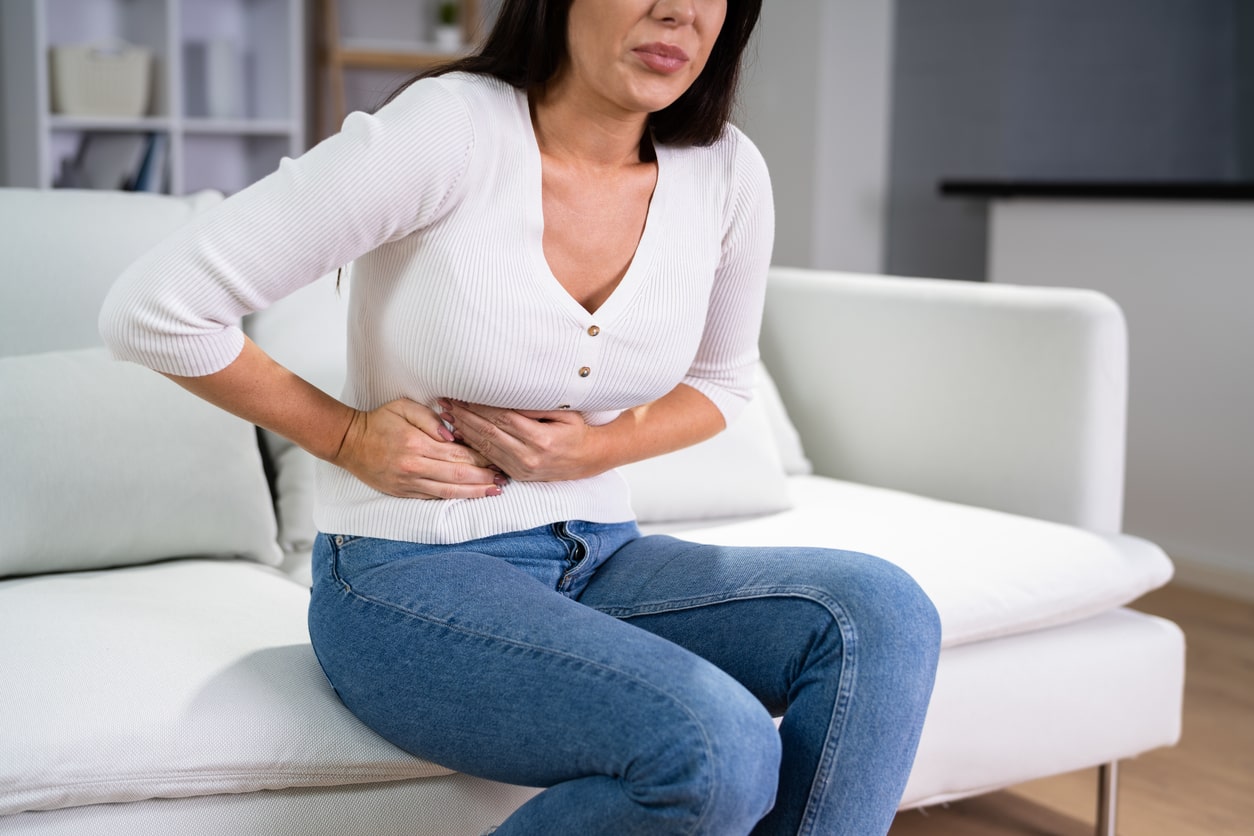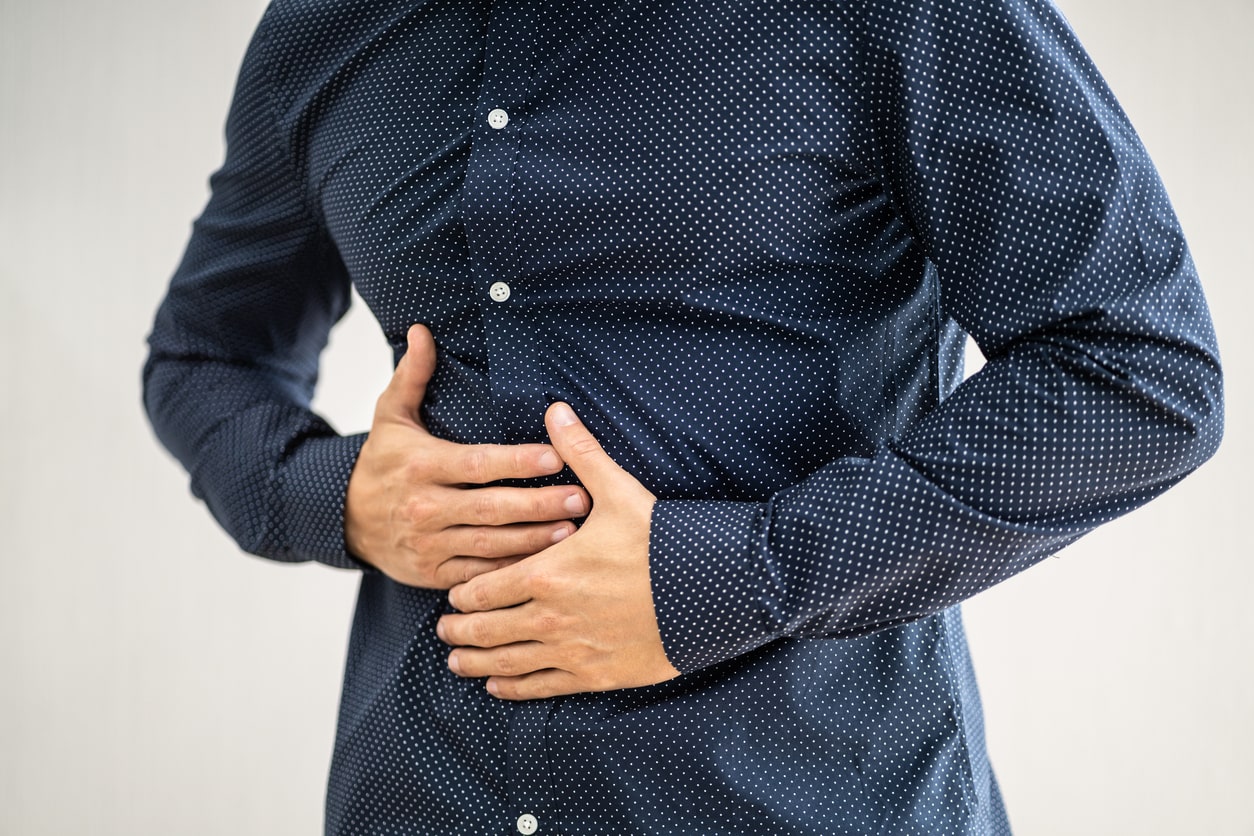
Diverticulitis: Recognizing the Signs
When sudden abdominal pain strikes, it could be more than a typical stomachache. Diverticulitis is when small pouches in your digestive tract become inflamed or infected. It affects countless people yet often goes unrecognized in its early stages. While it can cause significant discomfort and disrupt daily life, understanding its distinctive symptoms is key to early detection and successful treatment. If you have unexplained abdominal pain, know the signs of diverticulitis. It could help you get timely care and avoid serious complications.
Understanding Diverticulitis
Diverticulitis occurs when small, bulging pouches called diverticula form in the digestive tract and become inflamed or infected. These pouches, often in the colon and common in older adults, typically go unnoticed as part of diverticulosis. While usually harmless, diverticulosis can lead to inflammation or infection, causing discomfort that may require medical attention. A low-fiber diet, age, obesity, inactivity, and some drugs can cause diverticulitis. Although severity varies, recognizing symptoms early is key to preventing complications and maintaining digestive health.

Top 10 Symptoms of Diverticulitis
While the severity and combination of symptoms can vary from person to person, there are several common signs to be aware of:
- Abdominal Pain: The most common symptom of diverticulitis is abdominal pain, usually in the lower left side of the abdomen. This pain can be constant and may persist for several days. It’s often described as sharp, cramping, or stabbing and may worsen with movement.
- Changes in Bowel Habits: Diverticulitis can cause noticeable changes in your bowel movements. You might experience constipation, diarrhea, or alternating bouts of both. Some people may also notice a change in the consistency or appearance of their stool.
- Fever and Chills: A high temperature and chills can signal an infection related to diverticulitis. A fever over 100.4°F (38°C) warrants medical attention, especially when combined with other symptoms.
- Nausea and Vomiting: Some individuals with diverticulitis may experience nausea, sometimes leading to vomiting. These symptoms can be particularly concerning if they prevent you from keeping food or liquids down.
- Bloating and Gas: Increased abdominal bloating and excessive gas are common complaints among diverticulitis patients. Due to trapped gas, you might feel unusually full or experience discomfort.
- Loss of Appetite: As the condition progresses, you may notice a decreased appetite. This can be due to abdominal discomfort, nausea, or a general feeling of unwellness.
- Tenderness in the Abdomen: The affected abdomen area may feel tender to the touch. This tenderness can be relatively localized, often corresponding to the site of the inflamed diverticula.
- Blood in Stool: In some cases, diverticulitis can cause minor bleeding in the digestive tract, leading to blood in the stool. This may appear as bright red blood or darker, tar-like stool, indicating potential complications.
- Urinary Symptoms: The colon is near the bladder. So, some with diverticulitis have urinary issues like increased frequency, urgency, or discomfort. In severe cases, infections may even spread to the urinary tract.
- Fatigue or Weakness: The body’s response to infection and inflammation can lead to fatigue or weakness. This can be exacerbated by factors like fever, reduced appetite, and difficulty maintaining proper nutrition.
Risk Factors for Developing Diverticulitis
Risk factors for diverticulitis include various lifestyle and health factors. Age is one of the most significant risk factors, as diverticulitis becomes more common in people over 40. A low-fiber diet also plays an important role, as it can contribute to constipation and increase pressure in the colon, leading to the formation and inflammation of the diverticula. Obesity and a sedentary lifestyle can harm digestive health. They are linked to higher rates of diverticulitis.
Some medications, like NSAIDs and steroids, can increase the risk. They may irritate the digestive tract lining. Smoking has also been shown to elevate the risk of diverticulitis, making lifestyle adjustments an essential preventive measure. By addressing these risk factors, we can lower the risk of diverticulitis. This will help maintain good digestive health.

Diagnosing Diverticulitis
Diagnosing diverticulitis starts with a medical exam, including a review of symptoms and checking for abdominal tenderness, especially on the lower left side. A CT scan is often used to confirm the diagnosis and rule out other conditions by showing inflamed or infected pouches in the digestive tract. Blood tests may also be done to check for infection or inflammation. Early diagnosis is crucial to get proper treatment and avoid complications.
Treatment Options for Diverticulitis
The treatment for diverticulitis depends on its severity and any complications. Common treatment options include:
- Antibiotics: Prescribed to treat infections associated with diverticulitis, helping to reduce inflammation and prevent complications.
- Dietary Modifications: During acute episodes, a temporary low-fiber diet may be recommended to allow the digestive system to rest. Once symptoms improve, the diet will gradually transition back to a high-fiber one.
- Pain Management: Over-the-counter pain relievers, such as acetaminophen, may be used to alleviate discomfort; however, nonsteroidal anti-inflammatory drugs (NSAIDs) should be avoided as they can irritate the digestive tract.
- Fluid Therapy: Increased fluid intake through oral hydration or intravenous fluids in more severe cases helps prevent dehydration and supports recovery.
- Surgery: In recurrent or severe cases of diverticulitis, surgical intervention may be necessary to remove the affected portion of the colon, especially if complications such as abscesses or perforation occur.

Practical Tips for Preventing Diverticulitis
Making small changes can lower your risk of diverticulitis and improve digestion. Here are some easy tips:
- Eat More Fiber: Add more fruits, vegetables, and whole grains to your meals. Fiber helps keep your bowel movements regular and reduces pressure on the colon.
- Drink Plenty of Water: Staying hydrated helps fiber move through your digestive system, preventing constipation.
- Stay Active: Regular exercise, like walking or jogging, can keep your digestive system working well and lower your risk.
- Limit Red Meat and Processed Foods: Eat less red meat and processed food and choose lean proteins like chicken or fish.
- Quit Smoking: Smoking can harm your digestive system and increase your risk of diverticulitis. Quitting can help your overall health.
- Pay Attention to Your Symptoms: If you notice any changes in your digestion or feel persistent discomfort, talk to your doctor.
These simple habits can make a big difference in keeping your digestive system healthy.
Take the Next Step Toward Digestive Wellness
Recognizing the symptoms of diverticulitis is vital in managing this condition effectively. Whether you’re experiencing unexplained abdominal pain or want to stay informed, paying attention to your body’s signals and seeking medical guidance at the first sign of trouble can make a big difference. Many people can successfully manage diverticulitis and prevent complications with proper treatment and lifestyle changes.
If you’re concerned about diverticulitis symptoms, our experienced gastroenterologists at Gastroenterology of Greater Orlando can provide the comprehensive care and personalized treatment you need. Contact our team to learn more about your options for treating and managing diverticulitis. Taking that first step can go a long way toward restoring your comfort and well-being.